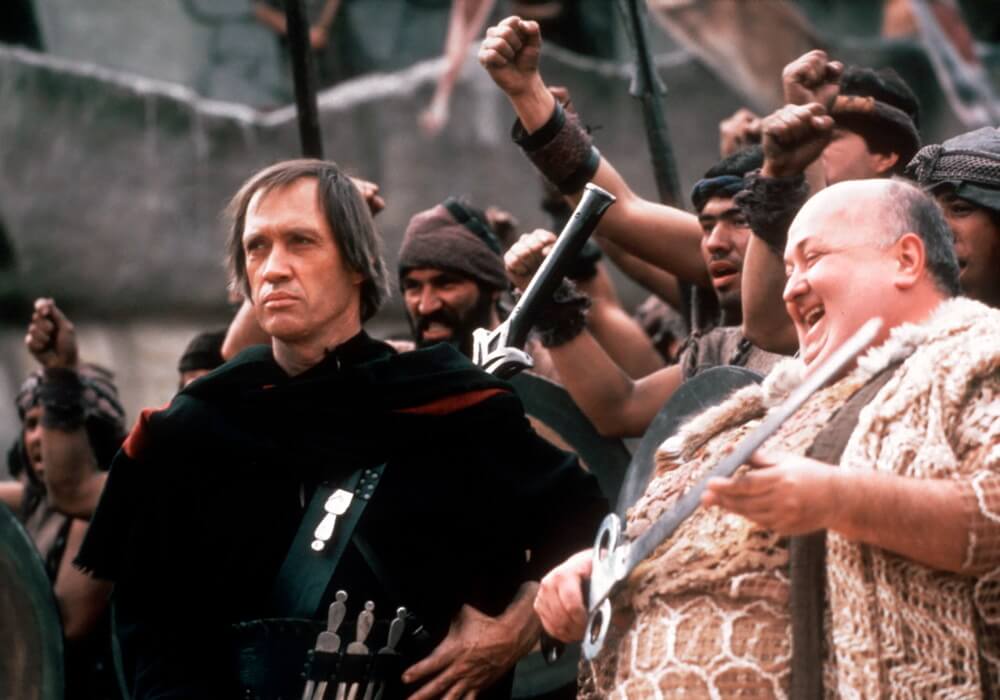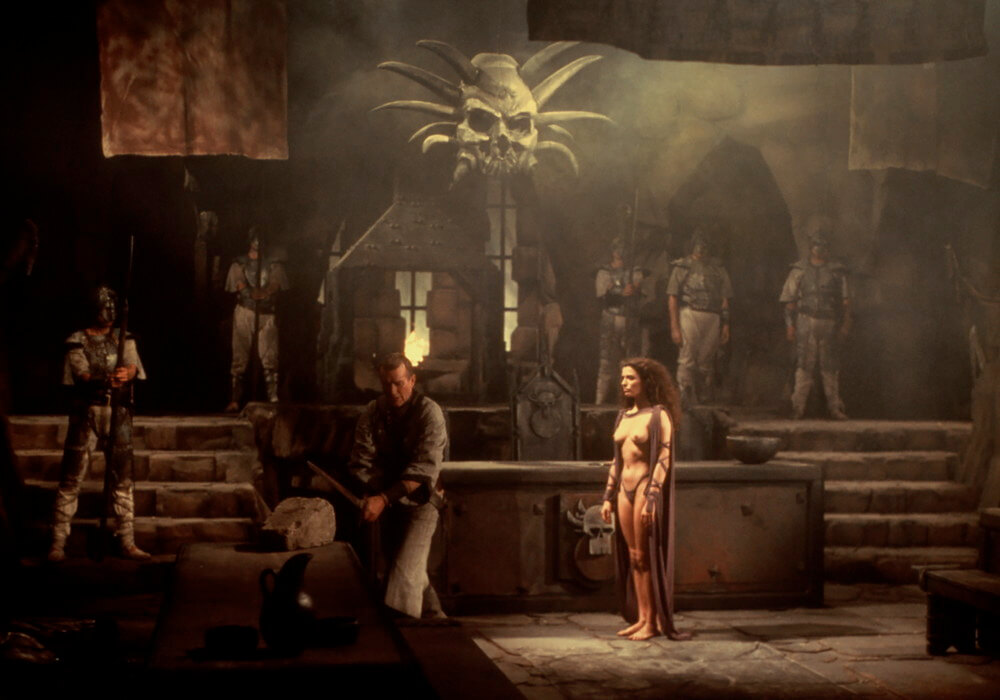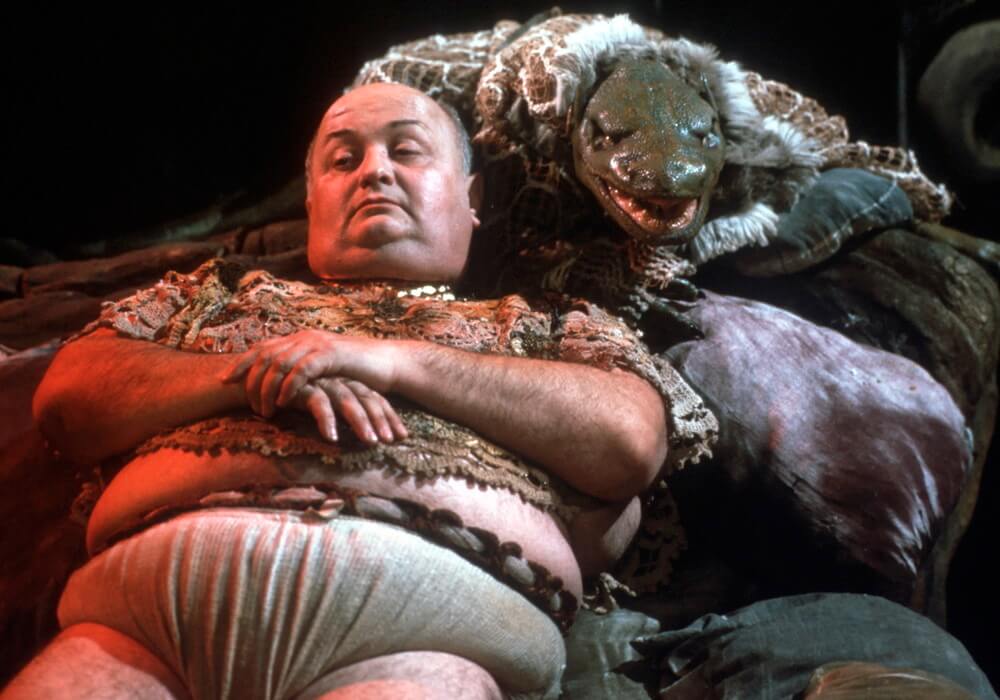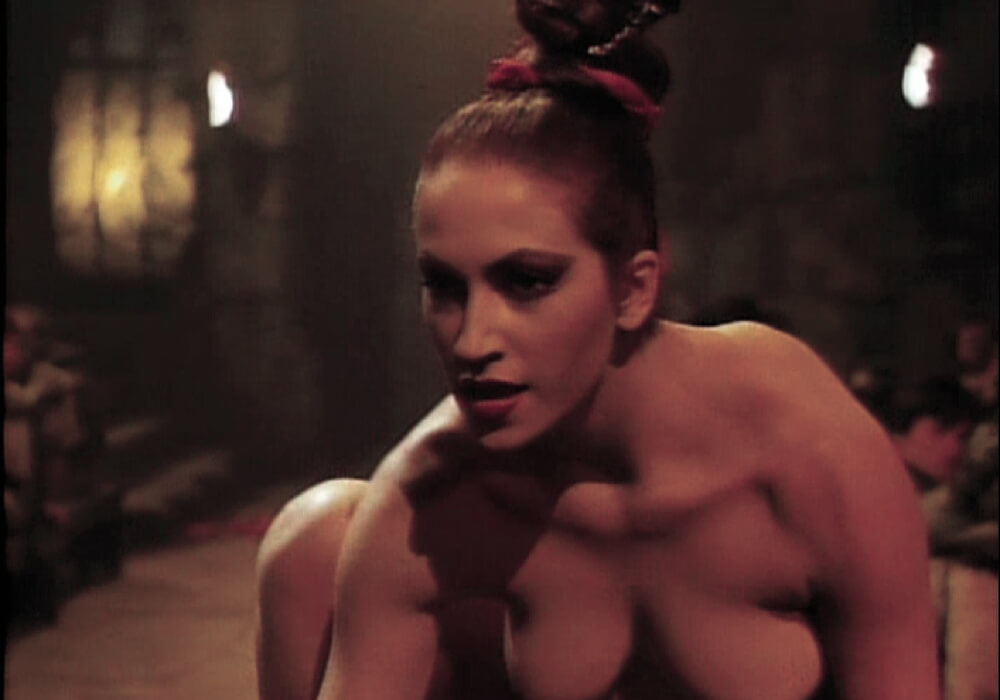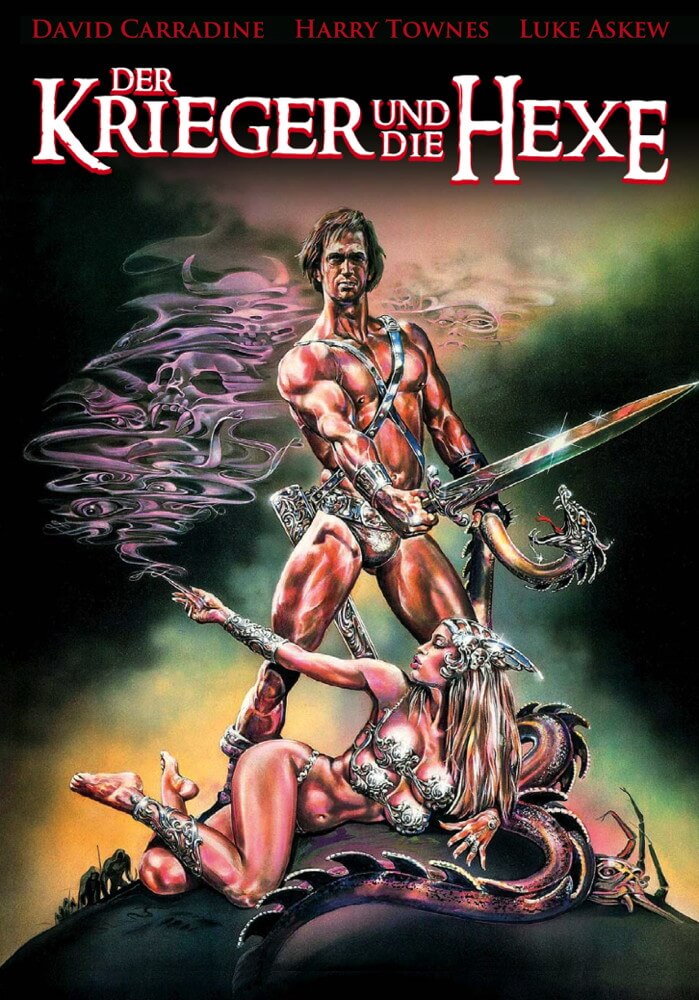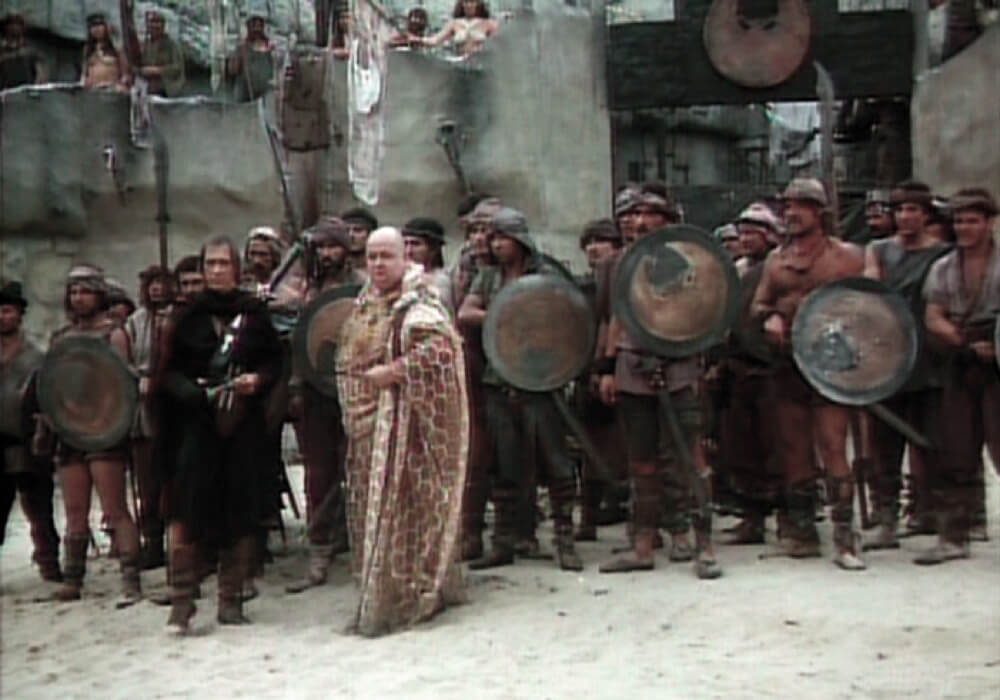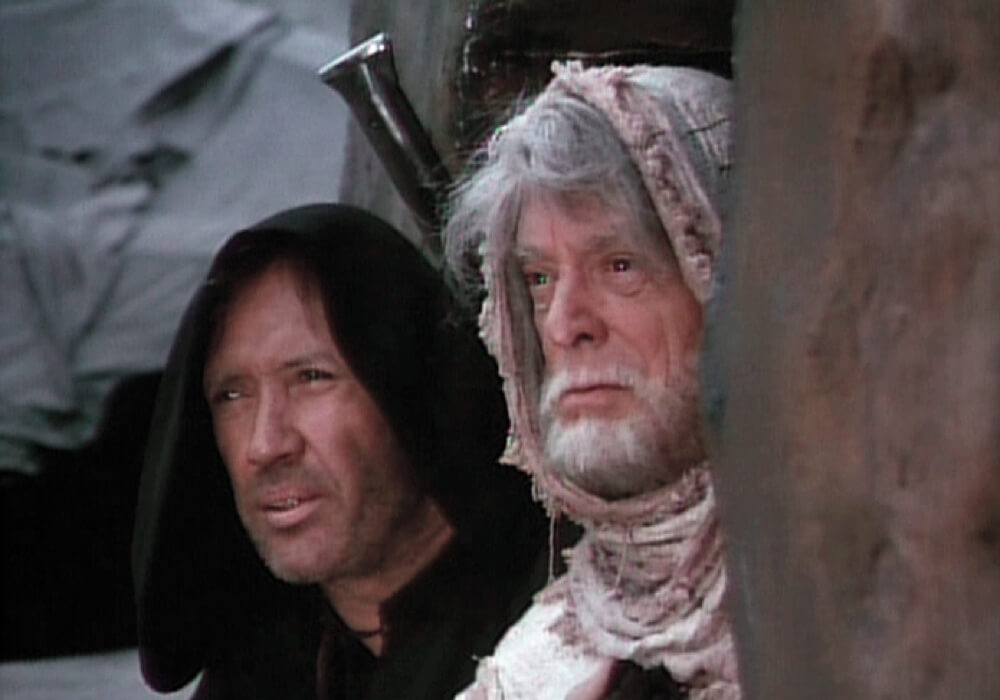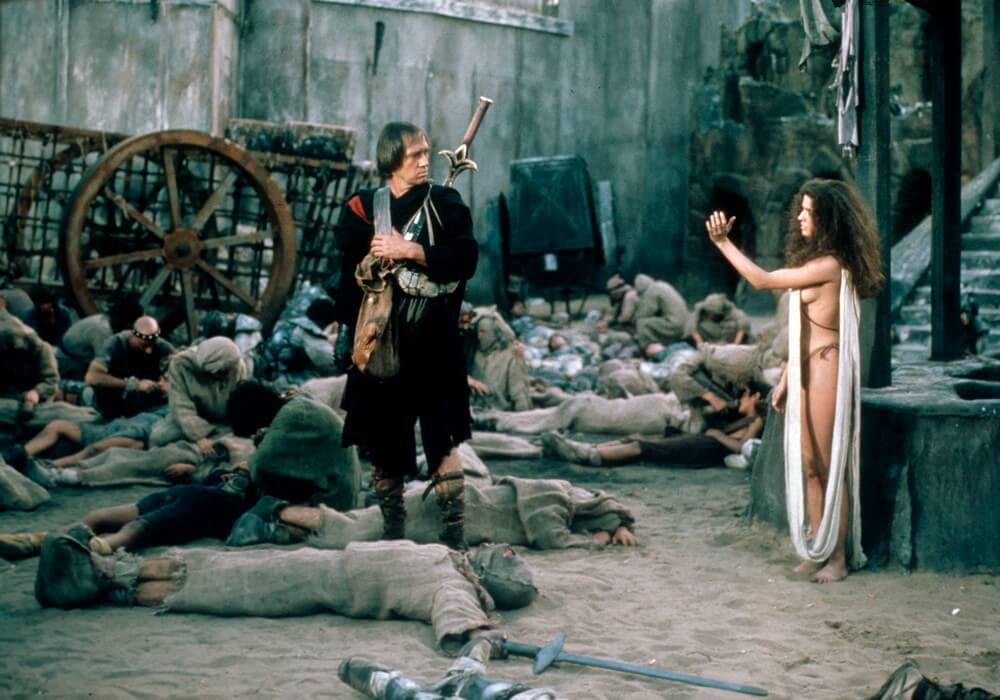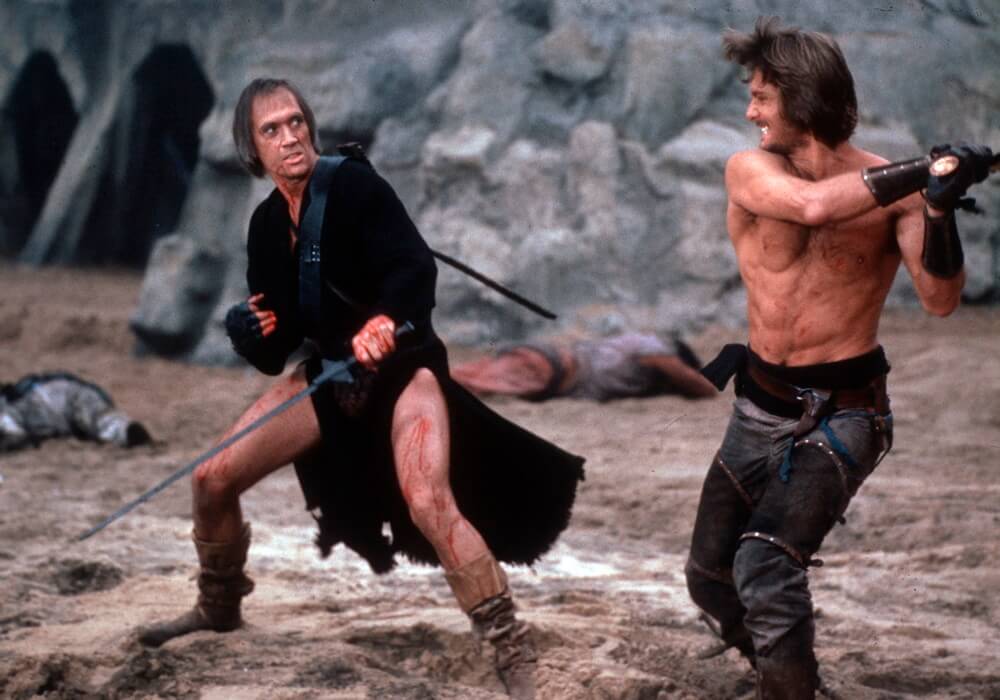Original title: The Warrior and the Sorceress
Director: John C. Broderick
Book: John C. Broderick, William Stout
Screeplay: John C. Broderick
Actors & actresses: David Carradine, Luke Askew, Maria Socas, Anthony De Longis, Harry Townes, Guillermo Marín, Armando Capo, Daniel March, John Overby, Richard Paley, Marcos Woinsky, Cecilia Narova, Dylan Willias, José Casanova, Miguel Zabaleta, Herman Cass, Arturo Noal, Hernán Gené, Gus Parker, Ned Ivers, Liliana Cameroni, Eva Adanaylo, Noëlle Balfour
Producer: John C. Broderick, Frank K. Isaac, Roger Corman
Co-producer: Héctor Olivera, Alejandro Sessa
Cinematography: Leonardo Rodríguez Solís
Camera and Electrical Department: Miguel Amengual, Juan José Fabio, Oscar González, Ever Latour, Hans Ritter
Sound: Pedro Marra, Jorge Stavropulos
Editing: Silvia Ripoll
Special Effects Ricardo Lanzoni
Stunts: Anthony De Longis
Makeup: George Barry, R. Christopher Biggs, Willy Smith, Rodolfo Spinetta
Costume and Wardrobe Department: María Julia Bertotto, Beatriz Quiroga, Gloria Van Hartenstein, Mónica Mendoza
Casting: Stan Shaffer
Music: Luis María Serra
Production companies: Aries Cinematográfica Argentina, New Horizons Picture
Year of production: 1984
Genre: Action, Adventure, Fantasy
Counties: Argentinia, USA
Language: English
Dubbing: German
Lenghth: 81 Min
Rating: FSK 16
Aspect Ratio: 1.85 : 1
Sound: Mono
Resolution: SD


